Have you ever wondered what the archeologists at History Nebraska do when the weather does not permit field work? We’ve got the answer right here.
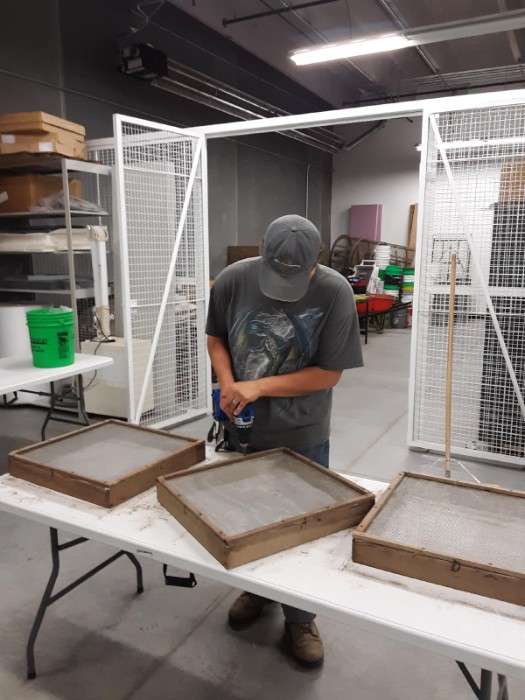
Have you ever wondered what the archeologists at History Nebraska do when the weather does not permit field work? We’ve got the answer right here.
When heavy spring rains left fields too soggy to survey, archeologist Nolan Johnson used the time to repair some of the screens that our archeologists use in the field. While our archeologists are adept at restoring the screens to workable condition, you will see below they do not exercise the same precision and care as the skilled conservators at our Ford Conservation Center do with their projects.
The screens are simply metal mesh on a wooden frame. Two varieties needed repair this spring: a rocker screen and drying screens.
In the field, archeologists use rocker screens to pass excavated dirt through. This is an essential part of archeology. It allows all artifacts over one quarter of an inch in size to be collected in a controlled and scientific manner. Archeologists are very meticulous about where artifacts are from and how they are collected. Nebraska dirt can range from rock hard clay to extremely thick and sticky clay and everything in between. Getting the dirt through the screens to reveal the artifacts requires forcing the dirt through the screen with sometimes intense pressure. These conditions take a toll on both the quarter inch metal mesh of the screens and the wood frame.
To replace the broken mesh, the wood slats on the bottom of the screens need to be unscrewed. The mesh itself is held on with staples and once these are removed the mesh can be discarded. New mesh is then cut with tin snips to fit each screen and then stapled onto the wood frame. The wood slats are replaced and the screen is good as new.
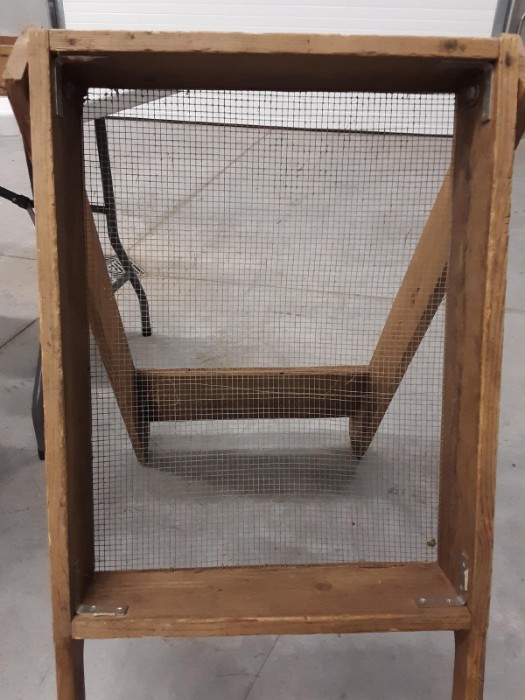
On this rocker screen the wire mesh has come apart. This would allow artifacts larger than a quarter of an inch to fall through and negate the efforts of the archeologists to collect artifacts in a precise and uniform manner across an excavation.
Drying screens are used for laying artifacts out to dry in the lab. They have a one sixteenth of an inch mesh which is fairly delicate. These screens are used when samples of dirt from archeological sites have been processed with water to recover fine grain material such as beads, seeds, or tiny bones.
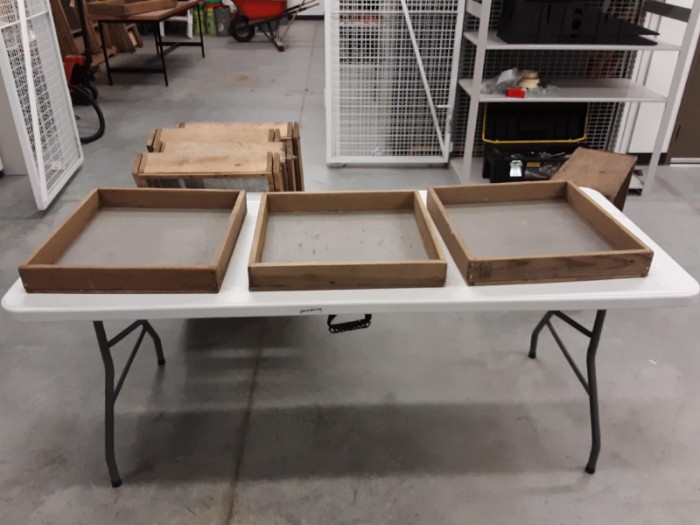
Here are three of the drying rack screens. Each has holes in the one sixteenth of an inch mesh which would allow tiny artifacts like glass trade beads or tiny flakes from sharpening stone tools to fall through and be lost.
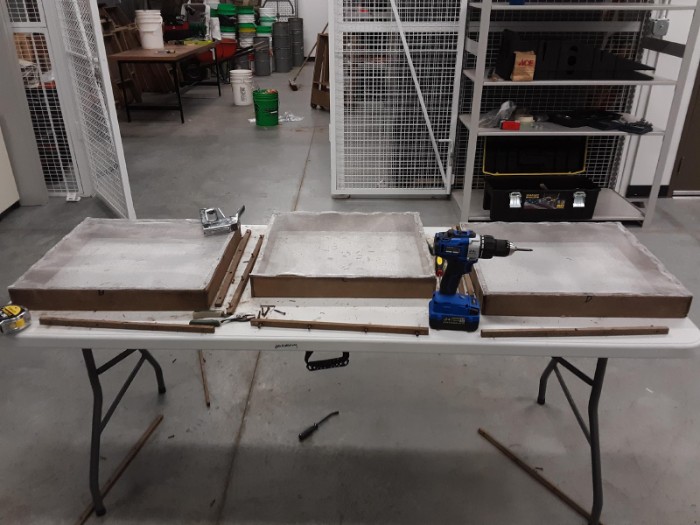
New mesh has been stapled to the wood frames.

A drying rack screen with the broken mesh removed.
One screen presented a particular challenge since one side board had split nearly in too. The board had been previously glued but had spilt again at a screw. Glue was applied liberally to the spilt. Pilot holes were drilled through the split and screws were used to hold the two parts of the spilt board in place. One of the screw holes was packed with glue and wood shavings and the screw replaced. The glue and wood will harden around the screw to secure it. Finally the metal support was replaced.
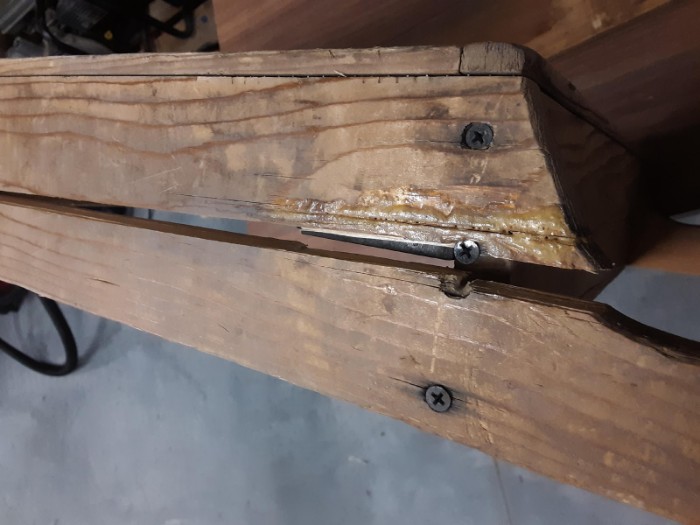
You can see the old glue repair and how the split begins at the screw.

The metal support bracket has been moved away from the damaged area.
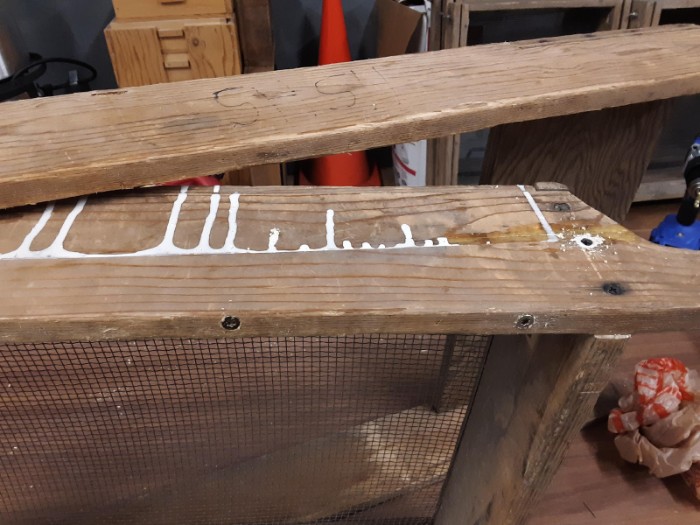
Here is the board glued and screwed together. Note the liberal amounts of glue and the glue around the one screw at the spilt. The staff at the Ford Center would not approve of the workmanship.



